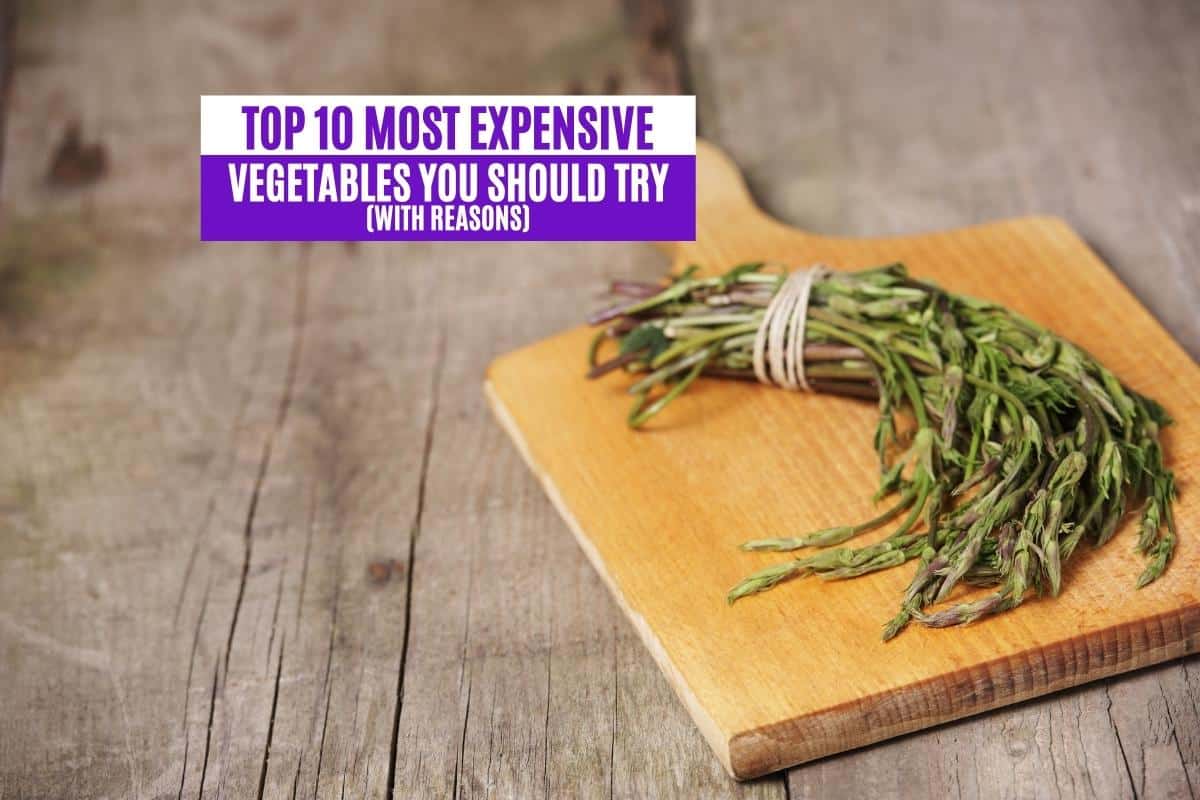For any aspiring gourmand who has never considered a vegetable to be a luxury ingredient worthy of starring in a dish, we’re about to prove you wrong.
Certain vegetables can be shockingly expensive and rare. We aren’t talking about pricier vegetables you might find in your average grocery store.
We’re talking about the most expensive vegetables you’ll have to go to some lengths to acquire because they are either sold only by licensed vendors or due to their extremely difficult growing conditions.
We’ve gathered a comprehensive overview of expensive vegetables from around the world. This guide will cover how they are produced, their price range, and how you might acquire them.
What Makes Some Vegetables More Expensive Than Others
This is the most obvious in the case of the same kind of vegetable sold at vastly different price points. Let’s take Yamashita spinach and normal spinach, for example.
Yamashita spinach sells at 10 times the price of normal spinach. Why?
Locality
We’ve grown accustomed to the high price point of something like Kobe beef or Jamon Iberico de Bellota. We recognize that these meats are grown with the utmost care and attention, resulting in superior taste, quality, and texture that no one can deny.
What if we told you it’s the same for vegetables? Do you think there would be a difference between spinach grown for mass agriculture and spinach grown by the most dedicated spinach farmer in the world?
When it comes to something like Yamashita spinach or other luxury vegetables, there just might be. Ultra-dedicated vegetable growers like Asufumi Yamashita spend years perfecting their strains of vegetables and grow only a small crop sold at higher price points.
Rest assured that when it comes to these locally grown, carefully cultivated vegetables, the taste and quality are assured. The spinach you might find at a Michelin-starred restaurant? Probably Yamashita.
Growth Challenges
People don’t associate vegetables with expensive taste.
In reality, fresh fruits and vegetables are costly and difficult to grow. They need specific weather, soil conditions, water quality, and care. They need to be harvested when they are ripe and pest-controlled.
These conditions all factor into the cost.
The costs are even more extreme for rarefied vegetables; they often have particular soil conditions and climate limitations. As climate change causes more extreme weather conditions, these vegetables will only rise in price.
Transportation Costs
If you are getting your spinach from a small cottage on the outskirts of Paris grown by the most dedicated spinach-grower in the world, you can bet transportation costs will be huge.
The most expensive vegetables are often sourced from remote locations, untouched by pollution and mass agriculture. This makes shipping costs all the more expensive.
Farmers need to harvest their vegetables at peak ripeness, package them for freshness, and ship them either by freight or some other means to your dinner table.
Due to global supply chain disruptions in the Covid-era and rising oil and gas prices thanks to the Russia-Ukraine war, transportation costs are higher than ever.
Longevity
Vegetables perish quickly. This is why, pound for pound, they are far more costly than other pantry staples with greater longevity.
Even if you order the best spinach in the world, it will go bad in a week. If you’re planning to add the priciest vegetables to your regular diet, be prepared for a steep recurring cost.
Here’s the List of 10 Most Expensive Vegetables:
- Hop shoots
- Spanish peas
- La Bonnotte potatoes
- Wasabi
- Yamashita kabu
- Yamashita spinach
- Pink lettuce
- White asparagus
- Sembikiya avocado
- Enza Zaden cocktail tomato
Please refer to our other lists of the most expensive food and drink items for some meal pairing ideas.
10. Enza Zaden Cocktail and Cherry Tomato
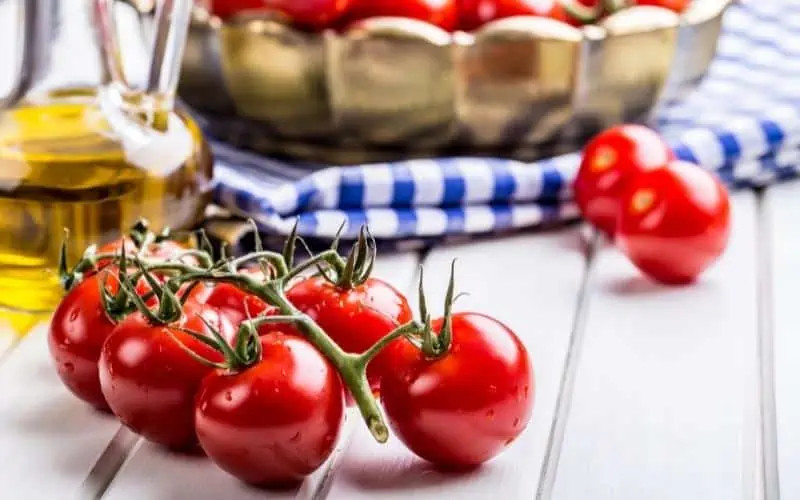
Enza Zaden is an independent, small business for vegetable breeders located in Enkhuizen, Holland.
The company breeds all of its tomatoes without genetic modification, which adds to the cost. Their tomatoes are hardy, disease-resistant, and flavorful.
Enza Zaden’s most expensive tomato varieties are their cocktail tomatoes. These tomatoes are glossy and firm with a sweet and aromatic flavor. We love cocktail tomatoes for their “on-the-vine” look while we char them in a seasoned cast-iron.
Price
The price of these tomatoes will depend on the seller and your location, but you can expect to pay from $1-$12 per pound for good cocktail tomatoes. We estimate this will be on the higher side due to rising transportation costs.
Why It’s Expensive
Enza Zaden’s tomatoes are glossy, supremely sweet, and packed with flavor, especially on the vine. You can read their extensive process for breeding tomatoes here, combining advanced DNA analysis with the sweetest known strains in Italy.
It’s common for Dutch growers to charge farmers $800,000 or more per kilo of seeds; for that price, they could buy more than 30 kilos of gold.
Enza Zaden maintains some of the most high-tech labs in the world for vegetable cultivation. The high price factors in their R&D costs in developing organic, disease-resistant tomatoes with excellent flavor.
9. Sembikiya Avocado
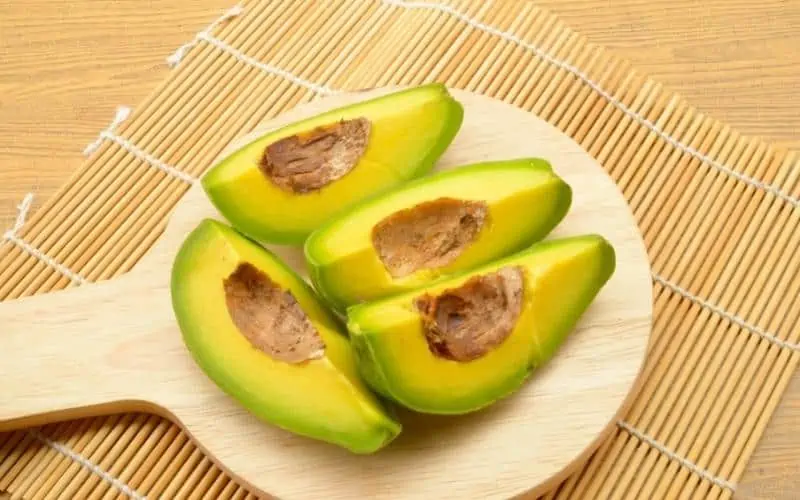
Avocados are both fruits and vegetables, just like a tomato is botanically considered as a fruit but is commonly considered a vegetable.
Though they are a trendy food, avocados are one of the costliest foods to grow in terms of the extraordinary labor required.
They command sky-high prices, and in recent years, an average Hass avocado may fetch as much as $2.19 each.
Price
An avocado from luxury fruit store Sembikiya fetches $6.60. Prices may vary seasonally.
Why It’s Expensive
Sembikiya is a luxurious Japanese fruit parlor. They have auctioned melons for up to $23,000. Their mangoes go for a shocking $237.
Sembikiya’s fruits and vegetables are grown in perfectly climate-controlled greenhouse environments and are monitored day in and day out. Their products are displayed in a glass case (look, but don’t touch) and are expertly gift-wrapped upon purchase.
The Sembikiya avocado is no exception; it is probably the most expensive avocado you’ll find in the world.
But what makes avocados in general so expensive?
They are expensive because of the resources growers must put in to cultivate good quality plants. Growers need the right water, fertilizer, pruning approach, pest control, and sunburn protection for their trees.
Avocado orchards must be planted from trees sourced from certified nurseries, and orders from these nurseries have to be placed years in advance.
Variable weather conditions and limited water supply all go into the higher price of avocados; to produce 200 million pounds of avocados for global consumption would require 54 billion liters of water.
8. White Asparagus
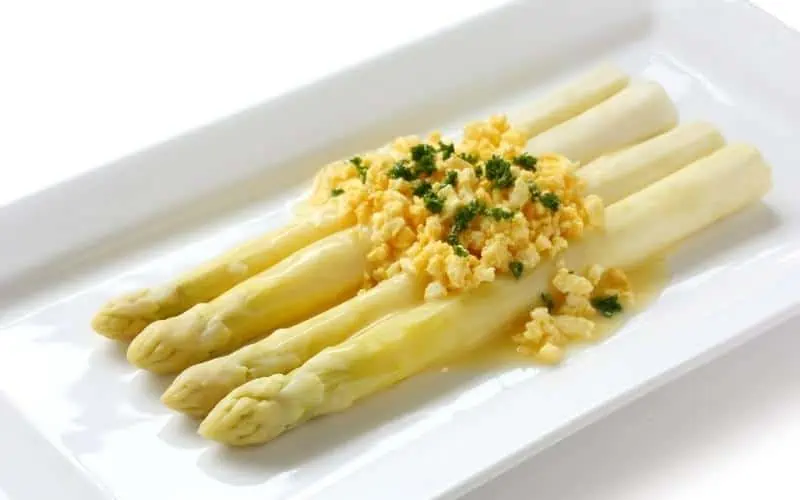
White asparagus, known as weißer spargel, is a German delicacy.
Germans eat the long, white spears with butter and ham.
You can usually pick these up in mid-march at a German farmers’ market, at staggeringly high prices. Germans refer to this plant as “white gold,” and the more expensive it is, the more the taste is assured.
According to consumers, this plant tastes different from normal asparagus. It is softer and more delicate than regular asparagus and has a subtler flavor.
Price
You can get this at your grocery store for around $8 per pound.
Why It’s Expensive
The main reason this variety is so expensive is time; asparagus crops take two years to mature, so farmers need to make up the cost. Every care is put into making sure the crop is not exposed to the sun to maintain its tender, almost translucent, white flesh.
Farmers harvest white asparagus before the crops peek out of the soil; because they are not exposed to the sun, they never develop the chlorophyll needed to turn them green.
7. Pink Lettuce
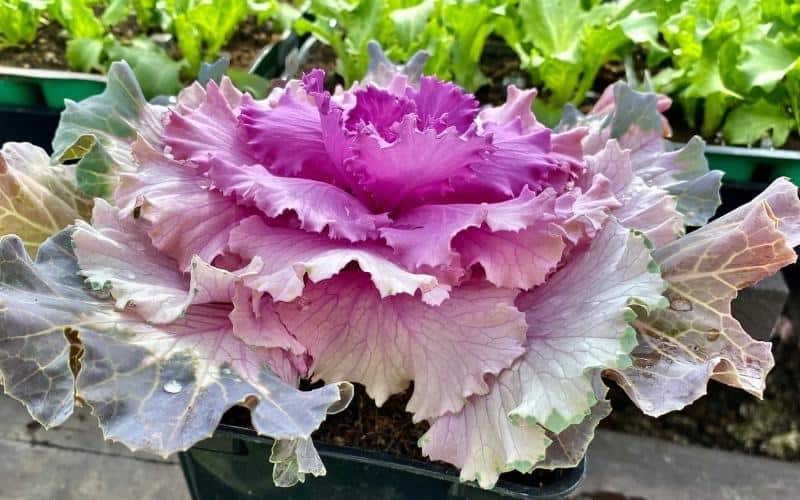
Pink lettuce is actually known as pink chicory, a lettuce lookalike.
You may have seen it on your social media because of its rare color.
Around four years ago, it was one of the hottest vegetables served at New York’s trendiest restaurants, including King, Legacy Records, Cafe Altro Paradiso, and Cafe Cluny.
Price
You can expect to pay up to $10 per pound for this variety of chicory.
Why It’s Expensive
Pink lettuce also goes by the name “La Rosa del Veneto.” It does look like fascinating lettuce rose, after all.
It was originally cultivated in the Veneto region of Italy but has since been outsourced to places like Pennsylvania and California.
The labor required to grow this complex chicory factors into its high price. It is grown for an exact amount of time and then forcibly harvested and replanted in the fall and winter in complete darkness.
It is then covered by sand so sunlight does not reach the stem, leading to the pink color.
6. Yamashita Spinach or Kinjiso Spinach

Asufumi Yamashita sources his seeds directly from Japan and chooses them for flavor rather than durability, which explains the unceasing care he gives his vegetables.
He exclusively grows Kinjiso spinach, which is leafy vivid purple spinach that requires a specific temperature range and acidic soil. It has been described as tasting uniquely crisp and nutty, and not like spinach at all.
Price
Yamashita spinach goes for $13/pound.
Why It’s Expensive
The sky-high prices have everything to do with Yamashita himself. He handpicks vegetables that are perfectly ripe, in season, on very particular days.
All of his vegetables are grown on a small farm that Yamashita has tilled and farmed from scratch. He tends all of his vegetables by hand as well. He attributes his success as a grower to the consistent close care and attention he puts into his vegetables each day.
He decides on the price of the vegetable the day of, and describes parting with them as parting with his “daughters.” Michelin-starred chefs who source directly from Yamashita have described his vegetables as being 10 times the cost of your average vegetable. He delivers at most 120 pieces per week.
5. Yamashita Kabu
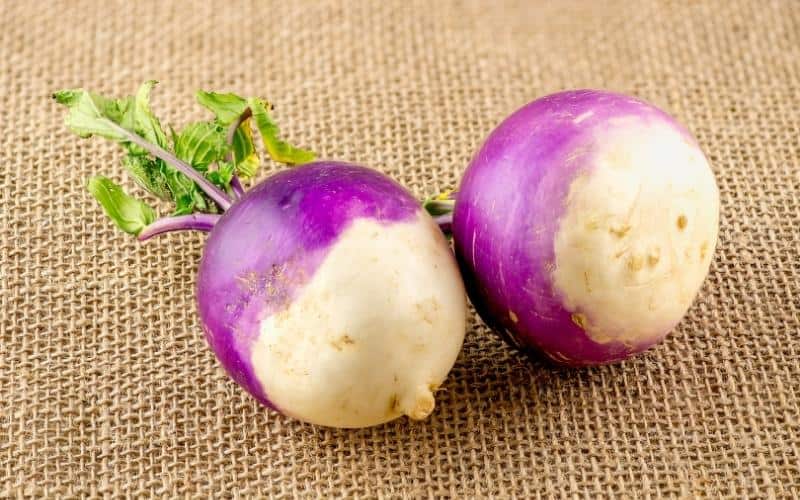
Kabu is a strain of Japanese white turnip. We’ve already mentioned that Asufumi Yamashita sells some of the priciest vegetables in the world, and this goes for his famed kabu as well.
The kabu is Yamashita’s trademark vegetable and what first got culinary heads turning. His variety is softer and sweeter than typical European turnips.
Price
Based on the price of your average Japanese turnip, around $3 per pound, we estimate that Yamashita turnips sell at a price of around $30 per pound.
Why It’s Expensive
Asufumi Yamashita’s approach to growing vegetables is second to none.
He is famous in the culinary world for his dedication to his vegetables and the results. He draws on his past experience cultivating bonsai to tend to his vegetables; he carefully trims and inspects each vegetable by hand and provides unique care to each vegetable depending on the strains’ needs.
He hand delivers his vegetables to only seven clients, all Michelin-starred chefs.
To sample his vegetables, you’ll have to eat at one of the Michelin-starred restaurants he supplies or at his own table d’hôte. Reservations start at 50 euros per person, for only 10 spots each week.
4. Wasabi
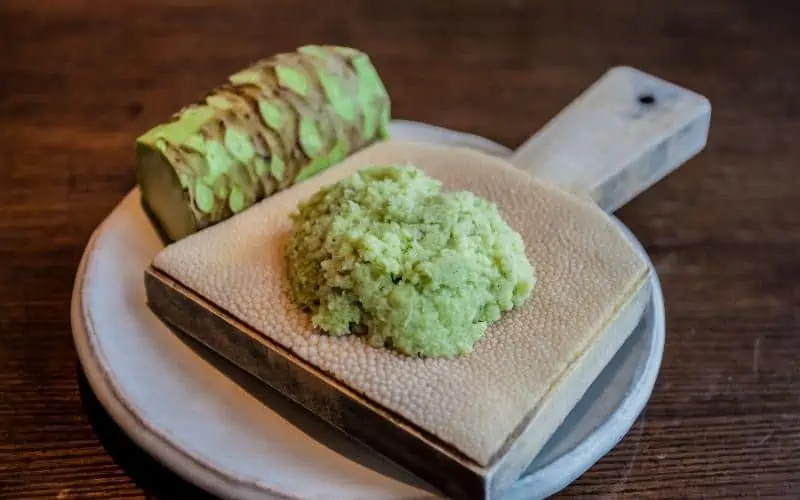
You’ve probably never had real wasabi; most of the “wasabi” served at sushi joints is just colored horseradish.
The wasabi condiment is fresh, nutritious, and made from grating the rhizome (root or stem) of the wasabi japonica plant.
The real plant tastes bright and green, and almost nothing like the pungent horseradish powder we are used to.
Price
Real wasabi can cost up to $45 per pound if it was grown in America or more than $100 per pound if it was grown in Japan.
Why It’s Expensive
This plant belongs to the “brassica” family and is native to the cool, moist areas along mountainous regions in Japan. It’s this highly specific combination of soil conditions that makes wasabi one of the most difficult plants to cultivate in the world.
Plenty of farmers have tried and failed to grow this plant. Farmers in Japan have tried to replicate the growing conditions by flooding gravel beds with mountainous water, with some success.
This means that large-scale wasabi farms will likely never come to fruition, and the price of the plant will stay high.
3. La Bonnotte Potatoes
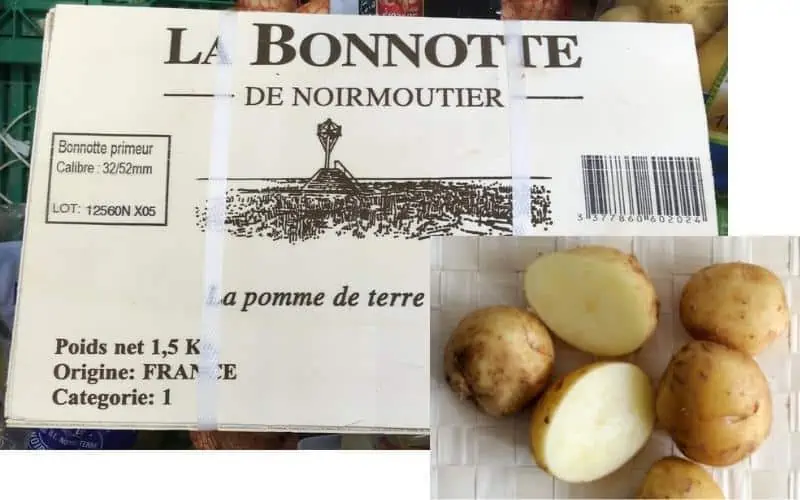
This variety is the world’s most expensive potato, grown exclusively on an island in France’s Bay of Biscay. They grow on a tiny strip of land.
Price
These potatoes go for around $300 per pound.
Why It’s Expensive
Many believe this is the world’s best tasting potato, but there are a couple of factors that go into its expensive price.
For one, the potatoes are hand-harvested for only one week per year. 2,500 pickers gather at dawn in the month of May to pick potatoes over seven days.
They must be handpicked since they are extremely delicate, and it is not recommended to peel them during preparation.
The peels absorb the aromas of the nearby seawater. They taste slightly of lemon with a hint of walnut.
2. Spanish Peas
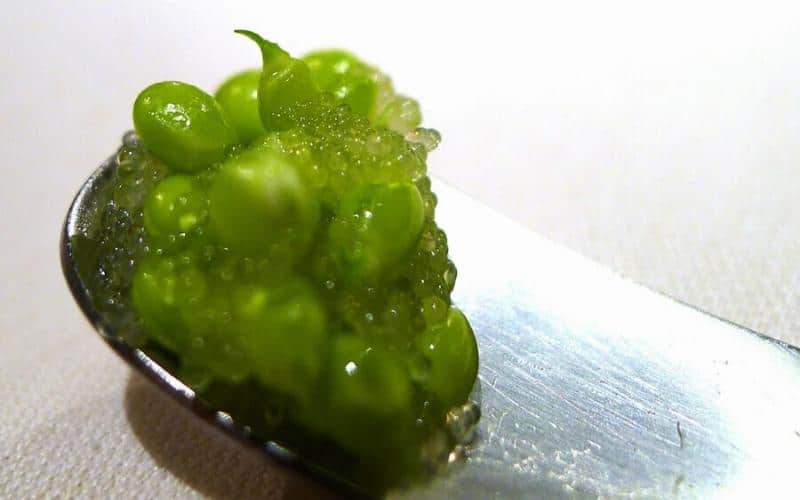
Burgaña cultivates these peas on his farm Aroa, near a village of only 2,500 people in Spain.
His situation is similar to Yamashita’s in that he primarily supplies Michelin-starred restaurants.
The peas are served raw, often accompanied by caviar. They have been described as having an exquisite, fresh crunchiness that gives way to herbaceous sweetness.
Iñigo Galatas, a food critic, describes them as being “caviar” from the ground, substituting a burst of sweetness for a burst of saltiness from caviar. No wonder they are usually served with caviar.
Price
These peas sell for more than $350 per pound.
Why It’s Expensive
It is all about the region; the peas are grown in Spain’s Basque region near the sea. The salinity in the air and the soil contribute to the intense flavor of crops grown in the region.
Burgaña is also a marketing genius, turning the generic “tear-shaped pea” varietal into a superstar vegetable. No question it is an excellent and flavorful pea, but we credit his emphasis on hard labor that allows the pea to fetch a sky-high price.
1. Hop Shoots
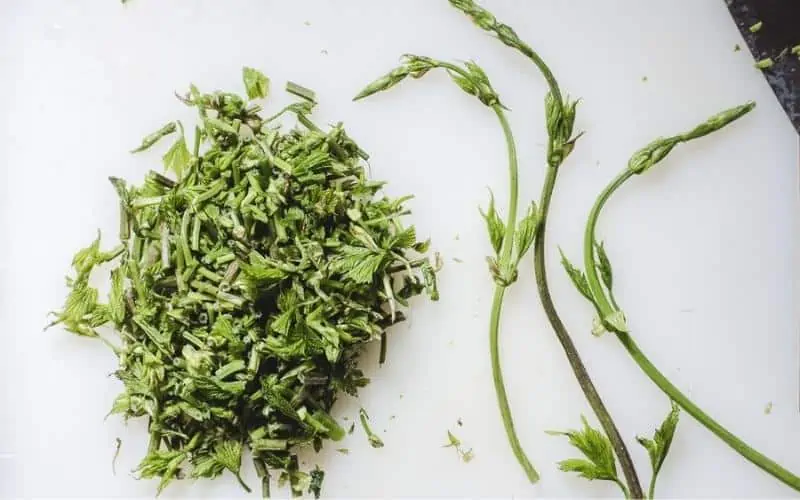
So, what is the most expensive vegetable?
You may know that hops are present in beer, but what about the shoots?
Hop shoots are a tender part of the hop vines, and they taste like a cross between beer and asparagus. They are harvested from the tips of the plants that won’t bear flowers used for beer.
These shoots are quite small but have an interesting and unique flavor. European hop shoots in countries that consume a lot of beer can grow to the thickness of asparagus. Generally, only the first three inches of the tips are eaten because the rest of the shoot is too tough to consume.
Price
Hop shoots cost more than $400 per pound.
Why It’s Expensive
They are expensive because they are extremely difficult to harvest. The shoots do not grow uniformly on the vine and it takes a bit of effort to discern them in the tangle of vines.
Harvesters must hunch down and dig around for hours to produce a tiny bag of hop shoots.
Sampling the Most Expensive Vegetables
It’s time to start making an event out of the most expensive vegetables. For a dedicated grower like Yamashita, it would be a dream to see vegetables get the attention they deserve.
Some of these vegetables are truly labor-intensive and this comes across in their superior flavor and quality.
Are you looking to enrich your lifestyle by exploring expensive, high-quality goods? Drop us an email and we’ll be in touch.

